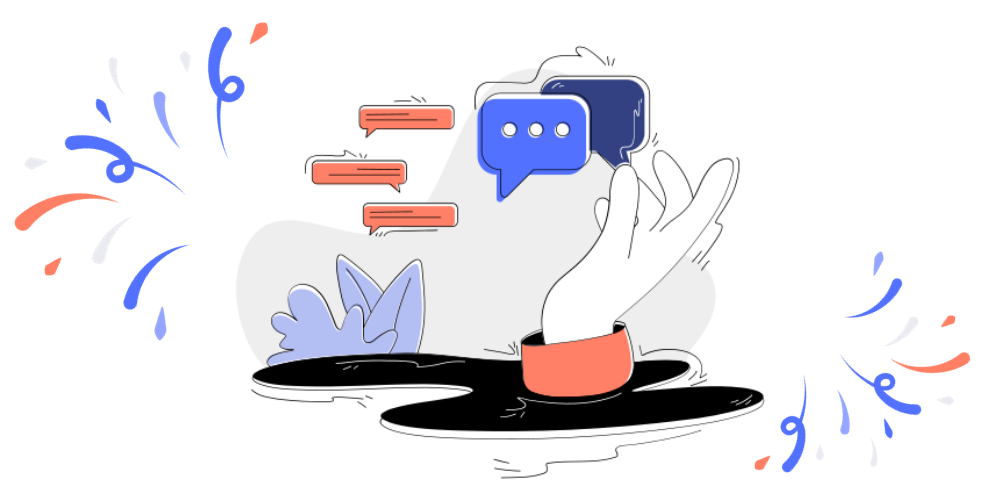
In today’s technologically advanced world, it’s hard to imagine a time when instant communication wasn’t just a few taps away. Texting has become an integral part of our daily lives, allowing us to connect with others instantly, share information, and express ourselves in ways that were unimaginable in the past. But have you ever wondered how this phenomenon came to be?
In this blog post, we will delve into the origins of texting, exploring its historic journey and evolution over time. We will uncover the reasons behind its invention, discover who was responsible for its creation, and even explore the first-ever text message sent. From there, we will explore how texting has evolved throughout the 20th and 21st centuries, adapting to the changing landscape of technology and communication.
We will explore the introduction of SMS, the impact of mobile phones on texting, and the advent of emojis and internet slang. We will also take a closer look at the current state of texting in the 21st century, examining the influence of smartphones and applications, the role of texting in social media, and what future trends we can expect to see.
But it doesn’t stop there. We will also dive into the social impact of texting, examining how it has changed the way we communicate and interact with one another. We will explore its effects on language and communication, its impact on social relationships, and even its role in business and education.
So, join us on this journey as we unveil the fascinating origins of texting and its remarkable evolution over time. Get ready to discover the incredible impact it has had on our lives and the exciting possibilities that lie ahead. Let’s dive in and explore the world of texting like never before.
Understanding the Concept: What is Texting?
Texting, also known as text messaging, refers to the act of sending short written messages electronically, typically through mobile phones or other communication devices. It involves the use of alphabetic and numerical characters to convey information quickly and efficiently.
Unlike traditional phone calls, which require immediate attention and real-time conversation, texting allows individuals to send and receive messages at their convenience. It offers a more asynchronous form of communication, enabling people to respond when it suits them best.
Texting has gained widespread popularity due to its simplicity and convenience. It provides a means of communication that is fast, accessible, and cost-effective. With just a few taps on a keyboard or touchscreen, individuals can share information, coordinate plans, express emotions, and stay connected with others.
The messages sent through texting are typically short and concise, limited by the character count or the cost per message in some cases. This brevity has led to the development of various abbreviations, acronyms, and texting conventions to convey messages more efficiently.
Texting has become an integral part of our daily lives, with billions of text messages being sent every day around the world. It has revolutionized the way we communicate, breaking down barriers of time and distance, and enabling instantaneous communication in a way that was not possible before.
In the next section, we will delve into the historical overview of texting, exploring why it was invented and who was responsible for its creation.
The Birth of Texting: A Historic Overview
Why Text Messaging was Invented?
The need for a written form of communication that transcended the limitations of traditional phone calls played a significant role in the invention of text messaging. As technology advanced and mobile phones became more prevalent, people sought a way to send messages quickly and discreetly, without the need for a lengthy conversation.
Text messaging provided a solution to this need, allowing individuals to send short messages without interrupting their daily activities. It offered a convenient alternative to phone calls, particularly in situations where verbal communication was impractical or unnecessary.
Who Invented Text Messaging?
The credit for inventing text messaging can be attributed to a team of engineers and developers who recognized the potential of this form of communication. One notable figure in this story is Matti Makkonen, a Finnish engineer, who is often referred to as the “Father of SMS” (Short Message Service).
While Makkonen played a crucial role in conceptualizing the idea of SMS, it’s important to note that text messaging was a collaborative effort that involved contributions from various individuals and organizations.
The First Ever Text Message
The exact details surrounding the first text message ever sent are a subject of debate. However, it is widely accepted that the historic message was sent in 1992. Neil Papworth, a British engineer, sent the message “Merry Christmas” from his computer to a colleague’s mobile phone. This significant milestone marked the beginning of a new era in communication.
Although the first text message was simple and informal, it laid the foundation for what would become a global phenomenon. Little did Papworth know that his message would ignite a revolution in the way people communicate and reshape the future of mobile technology.
In the next section, we will explore how text messaging evolved throughout the 20th century, adapting to the advancements in technology and the rise of mobile phones. We will uncover the introduction of SMS and its impact on the world of communication.
Texting in the 20th Century: How it Evolved
The Introduction of SMS
One of the most significant milestones in the evolution of text messaging was the introduction of Short Message Service (SMS). SMS enabled the transmission of short text messages between mobile devices, revolutionizing the way people communicated.
SMS was initially developed as a feature to send network messages between mobile operators and their customers. However, users quickly recognized the potential of SMS as a means of personal communication, leading to its widespread adoption.
With SMS, individuals could send messages of up to 160 characters, allowing for quick and efficient communication. This new form of messaging became increasingly popular as mobile phones became more affordable and accessible to the general public.
The Impact of Mobile Phones on Texting
The rise of mobile phones played a crucial role in the evolution of text messaging. As mobile phones became smaller, more affordable, and equipped with better keyboards, texting became more convenient and accessible to a wider audience.
The portability and convenience of mobile phones made it easier for individuals to send and receive text messages on the go. Texting became a preferred method of communication, particularly among younger generations who embraced this new form of interaction.
The Advent of Emojis and Internet Slang
As text messaging gained popularity, new forms of expression emerged to enhance communication further. Emojis, small digital icons representing emotions, objects, or ideas, were introduced to add a visual element to text messages. Emojis became a language of their own, allowing individuals to convey emotions and convey meaning in a more nuanced way.
Additionally, the rise of internet slang and abbreviations became prevalent in text messaging. Words like “LOL” (laugh out loud), “BRB” (be right back), and “OMG” (oh my god) became common shorthand in text conversations, enabling faster and more efficient communication.
In the next section, we will explore texting in the 21st century, examining the current state of texting, the influence of smartphones and applications, and the future trends we can expect to see in text messaging.
Texting in the 21st Century: The Current State and Future Prospects
The Influence of Smartphones and Applications
The widespread adoption of smartphones had a profound impact on the way we text. With larger screens, improved keyboards, and advanced messaging applications, smartphones made texting more user-friendly and versatile.
Smartphones allowed for more seamless integration of messaging apps, providing additional features such as read receipts, multimedia sharing, and group chats. These advancements transformed texting into a richer and more interactive experience.
Furthermore, the availability of internet connectivity on smartphones enabled the rise of alternative messaging services like WhatsApp, Facebook Messenger, and iMessage. These apps allowed users to send text messages over data networks, bypassing traditional SMS charges and expanding the possibilities of communication.
The Role of Texting in Social Media
Texting and social media have become closely intertwined in the 21st century. Social media platforms, such as Facebook, Twitter, and Instagram, have integrated messaging functionalities, allowing users to communicate through private messages within the platform.
Texting on social media offers a more public and interactive form of communication, enabling users to engage in conversations, share content, and connect with others in real-time. It has become a vital component of social media engagement, facilitating both personal and professional interactions.
Future Trends in Texting
Looking ahead, several trends are expected to shape the future of texting. One notable trend is the increasing integration of artificial intelligence (AI) and chatbots in messaging applications. AI-powered chatbots can automate responses, provide personalized recommendations, and even perform tasks on behalf of users, revolutionizing the way we interact through text.
Additionally, the use of voice-to-text technology is likely to become more prevalent, allowing users to dictate messages rather than typing them. This advancement will enhance convenience and accessibility, making texting more inclusive for individuals with disabilities or those on the go.
Furthermore, the evolution of 5G technology will bring faster internet speeds and reduced latency, enabling more seamless and immersive messaging experiences. This development will pave the way for enhanced multimedia messaging, augmented reality (AR) integration, and real-time collaboration.
In the next section, we will explore the social impact of texting, examining how it has changed the way we communicate and interact with one another. We will uncover its effects on language and communication, its impact on social relationships, and its role in business and education.
The Social Impact of Texting: Changes in Communication and Society
The Effects of Texting on Language and Communication
Texting has undoubtedly influenced language and communication patterns. The brevity and character limitations of text messages have led to the development of shorthand, abbreviations, and emojis. This has sparked debates about the potential degradation of language skills and the erosion of proper grammar and spelling.
However, proponents argue that texting has created new linguistic forms and expressions, enriching communication. It has given rise to a unique texting language, with its own set of rules and conventions, allowing for efficient and expressive communication within the constraints of the medium.
Texting and Social Relationships
Texting has significantly impacted social relationships, both positively and negatively. On one hand, it has provided a means of constant connection, allowing individuals to stay in touch with friends, family, and loved ones regardless of time and distance. It has made communication more convenient and immediate, fostering a sense of closeness and intimacy.
On the other hand, the reliance on texting as a primary mode of communication has raised concerns about the loss of face-to-face interaction and the potential for misinterpretation. The absence of nonverbal cues and tone of voice in text messages can sometimes lead to misunderstandings and strained relationships.
The Role of Texting in Business and Education
Texting has also found its way into the realms of business and education. In the business world, texting offers a quick and efficient means of communication, allowing for seamless collaboration, scheduling, and coordination. It has become an integral part of customer service, with businesses incorporating texting as a channel for support and engagement.
In education, texting has been utilized as a tool for communication between teachers, students, and parents. It facilitates instant notifications, updates, and reminders, making it easier to stay informed and engaged in the educational process.


